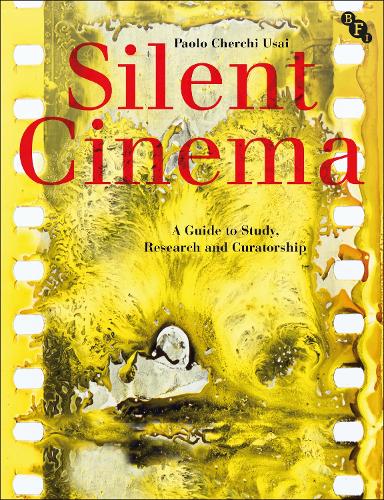
Silent Cinema: A Guide to Study, Research and Curatorship
(Paperback, 3rd edition)
Publishing Details
Silent Cinema: A Guide to Study, Research and Curatorship
By (Author) Paolo Cherchi Usai
Bloomsbury Publishing PLC
BFI Publishing
4th April 2019
3rd edition
United Kingdom
Classifications
Tertiary Education
Non Fiction
Films, cinema
Biography: arts and entertainment
Film, TV and Radio industries
791.4309
Physical Properties
Paperback
448
Width 188mm, Height 246mm, Spine 20mm
1020g
Description
Paolo Cherchi Usai provides a comprehensive introduction to the study, research and preservation of silent cinema from its heyday in the early 20th century to its present day flourishing. He traces the history of the moving image in its formative years, from Edisons and Lumires first experiments to the dawn of talkies; provides a clear guide to the basics of silent film technology; introduces the technical and creative roles involved in its production, and presents silent cinema as a performance event, rather than a passive viewing experience. This new, greatly expanded edition takes the reader on a new journey, exploring silent cinema in the broader context of technology, culture, and society, from the invention of celluloid film and its related machinery to film studios, laboratories, theatres and audiences. Among the people involved in the creation of a new art form were filmmakers, actors and writers, but also engineers, entrepreneurs, and projectionists. Their collective efforts, and the struggle to preserve their creative work by archives and museums, are interwoven in a compelling story covering three centuries of media history, from the magic lantern to the reinvention of silent cinema in digital form. The new edition also includes comprehensive resource information for the study, research, preservation and exhibition of silent cinema.
Reviews
Silent Cinema is a must-have book for everyone interested in cinema of all eras If youre not a silent fan, this giddy ride can make you one. * Observations on Film Art *
Paolo Cherchi Usai, renowned film curator, filmmaker, and programmer, has created an engaging saga of the diverse ways in which people have made filmsand rescued them for others to enjoy. Silent Cinema is a rare feast of information, ideas, and insights. Using Mlis moon-shot as a recurring example, Cherchi Usai surveys everything from perforations and acting performances to musical accompaniment, each treated with clarity and wit. Particularly valuable are the nuanced accounts of how digital technology has transformed our attitudes toward silent films. The reader comes away with a deeper appreciation of the patient curators who have dedicated themselves to making old cinema perpetually new. * David Bordwell, Jacques Ledoux Professor Emeritus of Film Studies, University of WisconsinMadison, USA *
For decades, Paolo Cherchi Usais book had been a definitive and inspiring guide to silent cinemaand stays so today when this formerly out-of-the-way and obscure field of study has entered the realm of mainstream entertainment. It stays so because Cherchi Usai has kept it up to dateby way of questioning rather than going along with contemporary dogmas and illusions. Silent film was a performative rather than a technologically reproductive medium; digitization of the photochemical is a deadly remedy instead of a hoped-for panacea. No stone unturned. I fully endorse Paolo Cherchi Usais daringly cautionary guide. * Yuri Tsivian, William Colvin Emeritus Professor at the University of Chicago, USA *
This third edition of an already classic introduction to cinemas silent era may be the best of all. Instead of merely updating his pioneering text, Paolo Cherchi Usai has re-thought what the early period means to us today, and addresses the digital natives who will be its main readers. Its hard to imagine a more enthusiastic or authoritative introduction. * Ian Christie , Anniversary Professor of Film and Media History, Birkbeck, University of London, UK *
Author Bio
Paolo Cherchi Usai is Senior Curator of the Motion Picture Department of George Eastman House, founder of the L. Jeffrey Selznick School of Film Preservation and of the annual Pordenone Silent Film Festival. Cherchi Usai's publications include The Griffith Project, co-published by the British Film Institute and Le Giornate del Cinema Muto, in 12 volumes (1996-2012); The Death of Cinema: History, Cultural Memory, and the Digital Dark Age (2001); and Burning Passions: An Introduction to the Study of Silent Cinema (1994).
